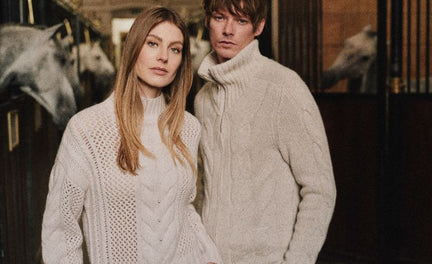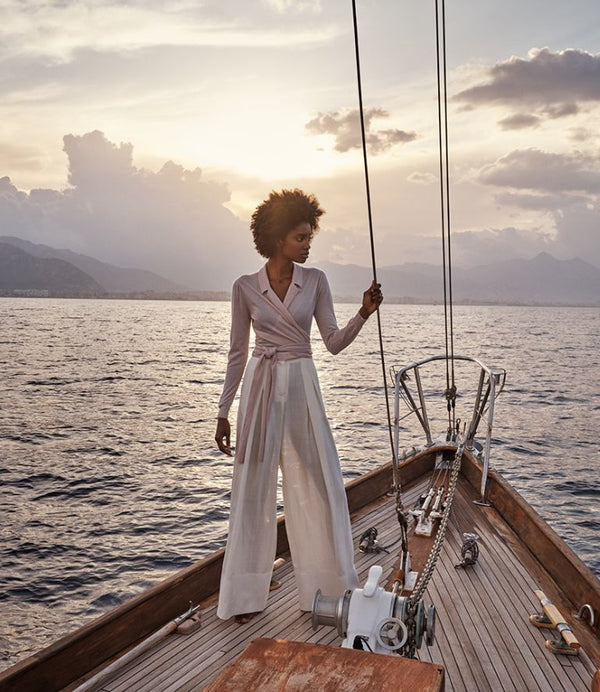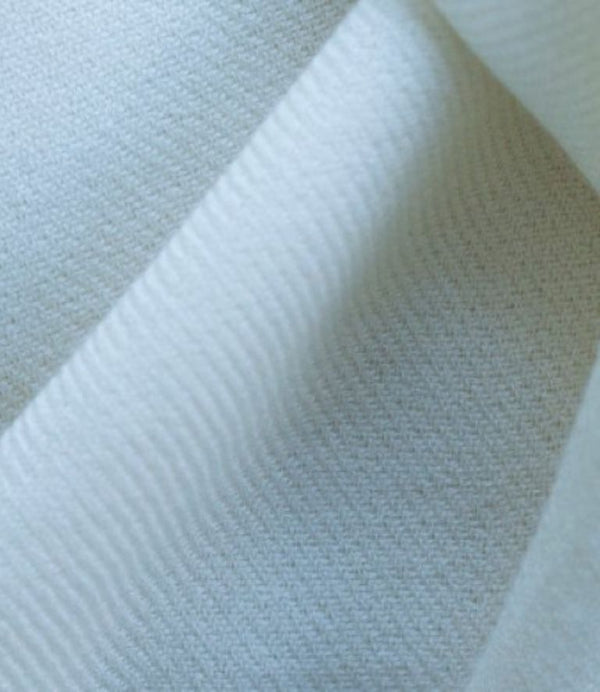Cashmere's Sustainable Chic
N.Peal has meticulously examined every part of the cashmere production process, from goat to finished product, to make it as sustainable as possible, writes Tamsin Blanchard
Anyone who has cleared out their wardrobes over the last few months of lockdown will know that the clothes that really stand out are the ones made from the finest materials, because quality never goes out of fashion. When we do go back to needing new clothes, many of us will be shopping with more of a conscience, not just because we are worried about the health of the planet, but because we understand that we are all connected, and we want to know more about the provenance of the clothes we buy and the conditions in which they were made.
We will be buying less, but buying better, and looking after our clothes for longer. And we expect that when we shop, we are doing so in the trust that the brand is doing the right thing every step of the way.

At N.Peal, customers shopping for cashmere knitwear can be sure that every part of the process has been carefully considered. The quality of the finest Mongolian cashmere speaks for itself. The wool of a well cared for cashmere goat is reflective of the conditions and treatment of the animal. The quality and longevity of this natural fibre is everything, which means the people, animals and the land come first and foremost in this finely balanced supply chain.
N.Peal have a relationship with the Mongolian goat farmers that goes back decades, and the welfare of the goats and the land on which they graze are of prime importance. Not all cashmere is equal. The reason our grandmothers treated their cashmere knits with so much care was because it was - and still is - the most precious of materials. But recently, it's become more widely available, often blended with other fibres. Cashmere production in Inner Mongolia, home to the highest quality fibre, rose from around 9,000 tons in the early 1990s to around 15,000 tons by 2018. This has put enormous pressure on the environment. 'Goats tear up the pasture land, so it's important the herds where you are sourcing are ethically managed,' says Adam Holdsworth, the CEO of N.Peal, who regularly travels to visit the Mongolian goat herders, as well as the state-of-the-art factory where the sorting, scouring, dehairing, dyeing, twisting, knitting, linking, and finishing are all done locally.

The cashmere is barcoded by area at the origin of the herd, so that the quality of the fibre from every single goat can be monitored closely. This allows the entire process and welfare standards of the animals to be continually checked too. While the grasslands are plentiful in the summer months, it is important to feed the goats sufficiently in the winter so that they don't destroy the local environment.
'We are monitoring adequate feed and water and general standards, and you can really tell the animals' health by the year on year by testing the fibre, the length, the micron count, and the level of lanolin,' says Holdsworth. 'We can see the quality of the fibre and overall management of the goat herds.' The optimum micron count for N.Peal is a luxuriously fine 15.5, six-times finer than a human hair, and any variation can be immediately corrected.
At the production stage too, every care is taken to ensure minimal harm to the environment so the dyes used are all organic, the water effluent is treated and recycled, and the production process is certified by the Global Organic Textile Standards (GOTS) group. This independent certification includes both ecological and social criteria.

The whole business of cashmere production must, by its nature, be slow. Once it is combed, it takes a cycle of a year for that fibre to be spun, washed, dyed and knitted into finished product ready for the stores. 'It's challenging,' says Holdsworth. 'You have to spend time and effort working closely with local partners as well.'
When you feel the irresistible quality, you'll agree the end result is worth the effort and care. All that's left is for each garment to be loved and cherished by its owner for years to come.
Tamsin Blanchard writes about fashion and sustainability for The Guardian and Vogue







